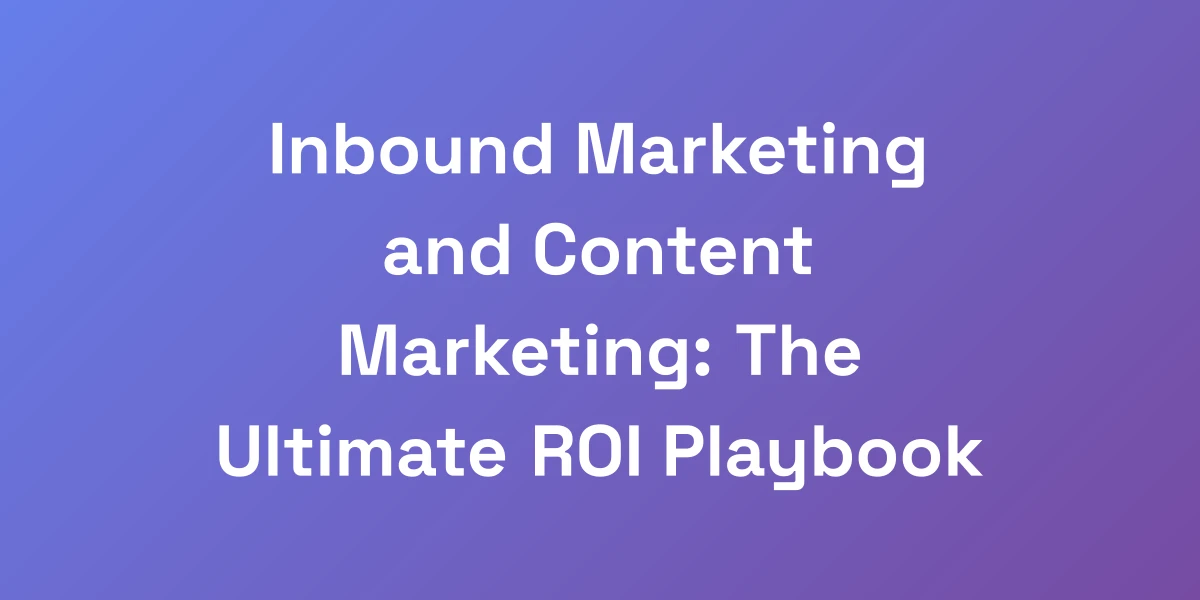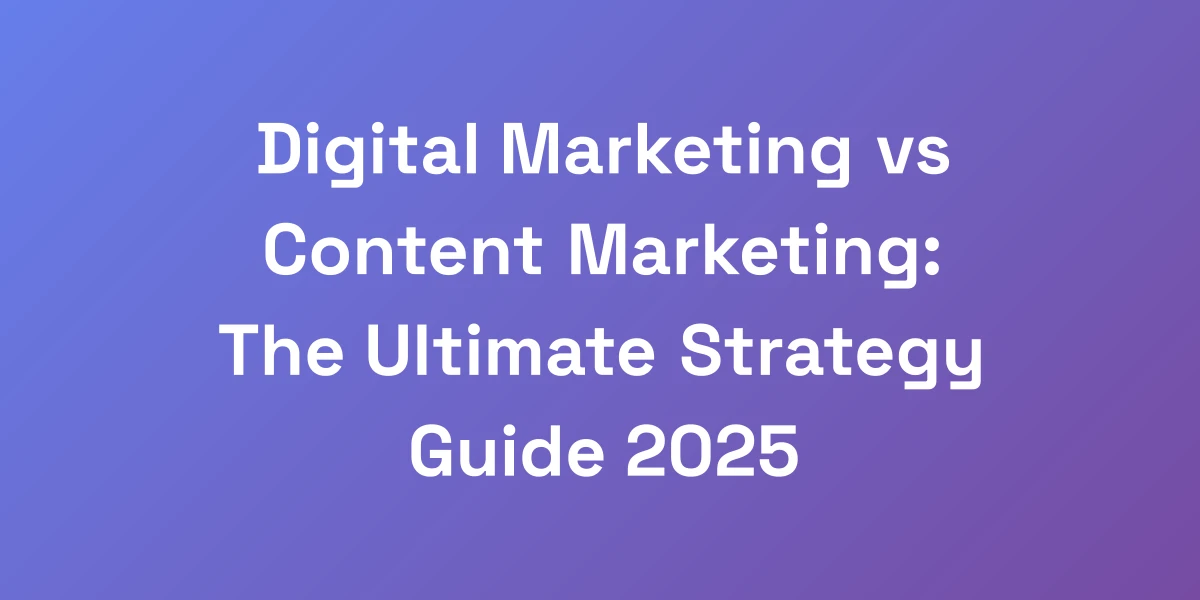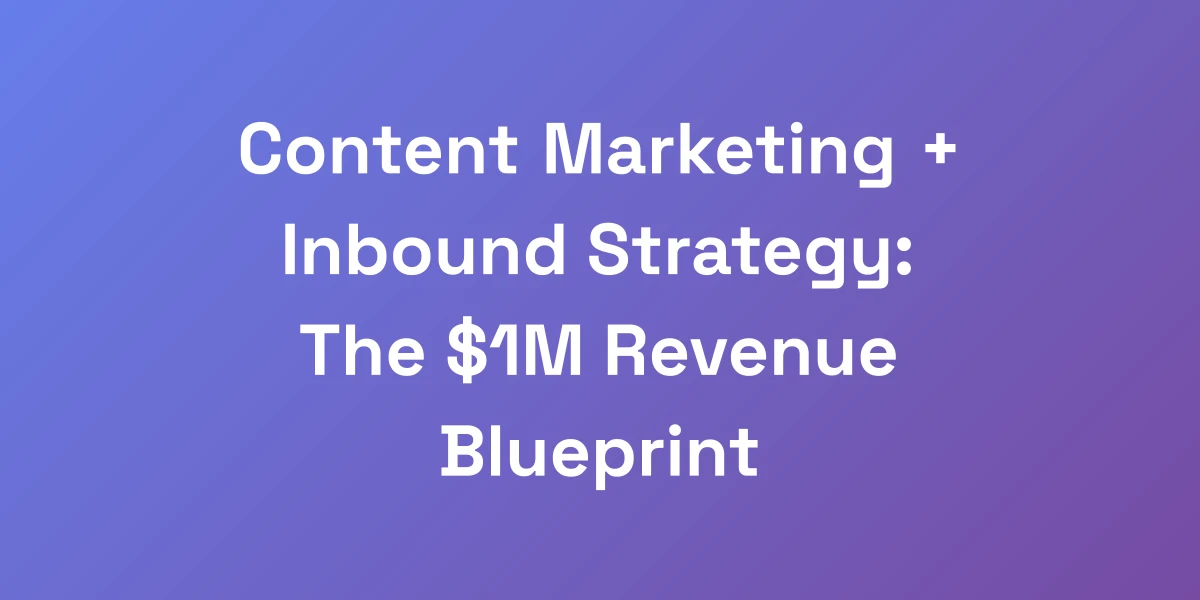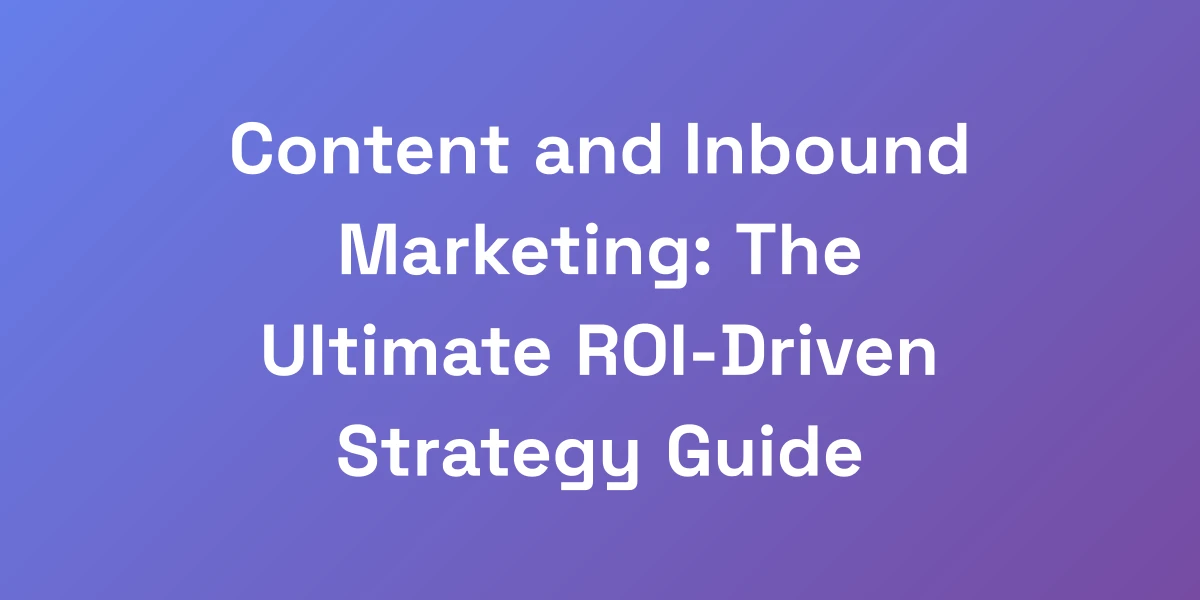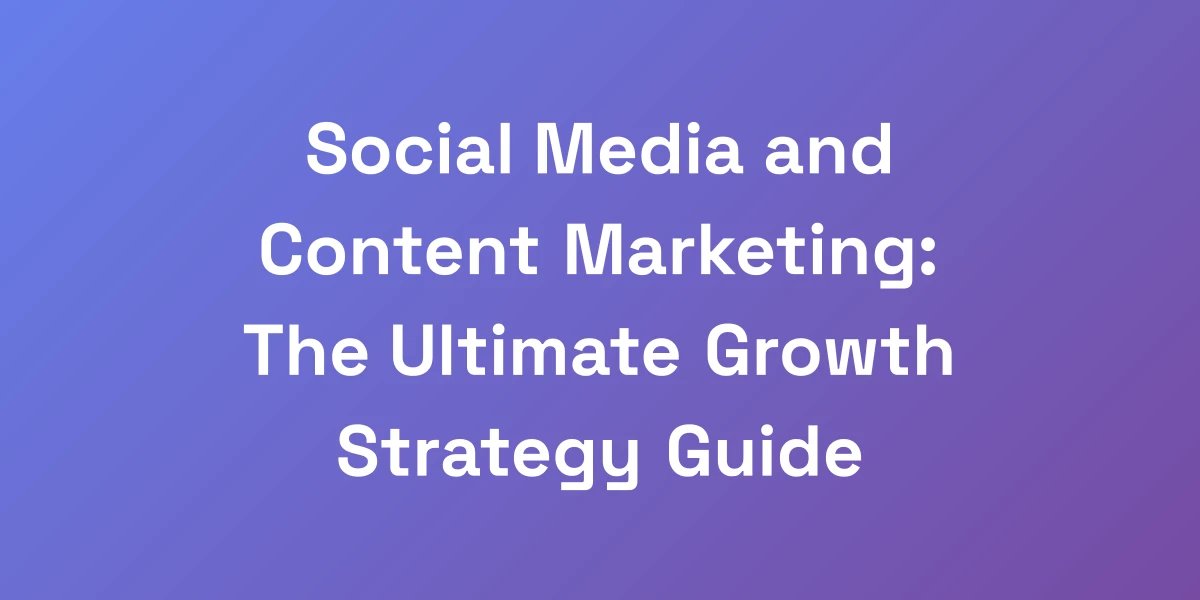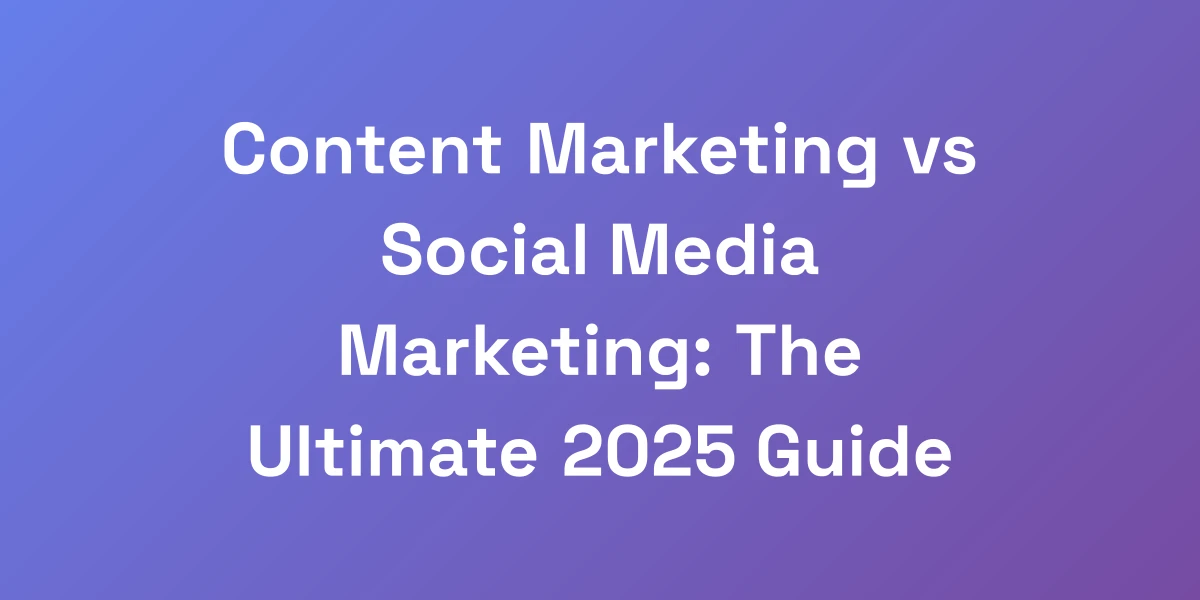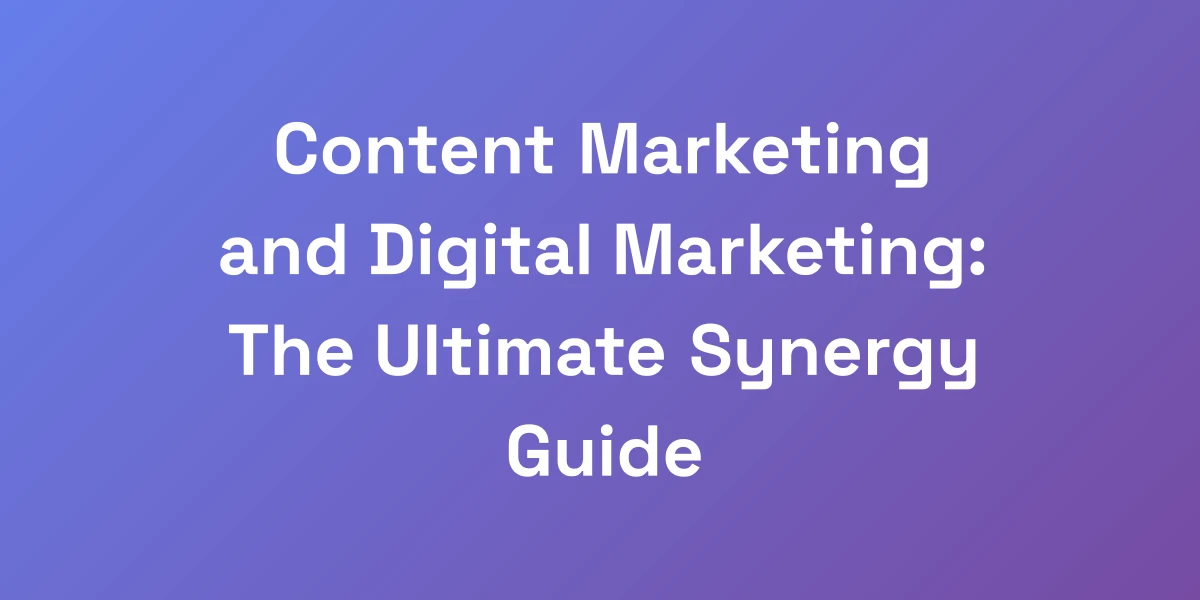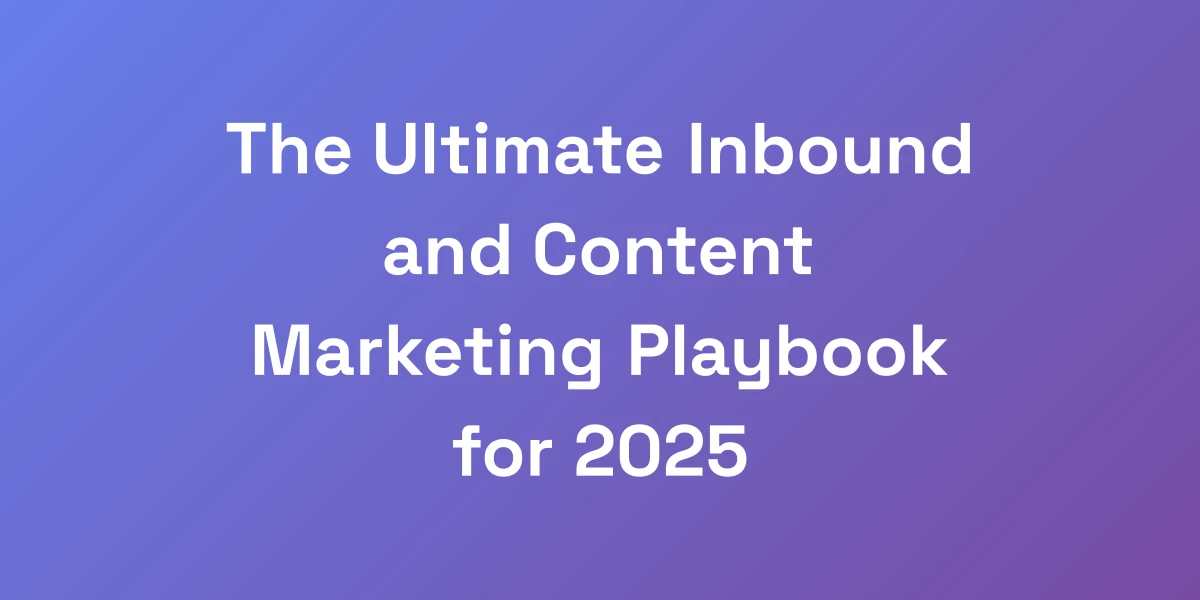
Content Marketing vs Inbound Marketing: The Ultimate Growth Strategy
Apr 5, 2025 | By [email protected]
Content Marketing vs Inbound Marketing: The Ultimate Growth Strategy
Let me hit you with some truth: most businesses are hemorrhaging money on outdated marketing tactics that barely move the needle.
Here’s the reality – the way people buy has fundamentally changed. Your customers aren’t sitting around waiting for your next sales pitch.
They’re actively searching for solutions, and if you’re not showing up with value first, you’re dead in the water.
Content marketing and inbound marketing aren’t just buzzwords – they’re the difference between scaling to 8-figures and watching your competition eat your lunch.
The Evolution of Digital Marketing: Why Content and Inbound Marketing Matter Now
We’ve seen digital marketing morph from simple banner ads to complex ecosystems that demand more than just visibility.
Today, it’s about creating meaningful connections and providing genuine value to your audience.
The Shift from Interruption to Attraction Marketing
Remember the days when marketing was all about interrupting your day with flashy ads?
Well, that’s old news. The game has changed to attraction marketing, where you pull customers in with valuable content instead of pushing them away with interruptions.
This shift means focusing on what your audience *actually* wants to see and hear, rather than what you want to tell them.
By attracting rather than interrupting, you build trust and authority, making your marketing efforts more effective and sustainable.
Think about it: would you rather watch a commercial for a product or read a helpful blog post about solving a problem you’re facing?
How Digital Transformation Changed Buyer Behavior
Digital transformation has revolutionized how buyers research and purchase products.
Today’s consumers are more informed and empowered than ever before.
They seek out information, compare options, and make decisions based on the value they perceive.
This behavior demands that businesses adapt by providing comprehensive and relevant content at every stage of the buyer’s journey.
Ignoring this shift means missing out on opportunities to engage and convert potential customers.
Understanding [consumer behavior trends in 2024](https://www.softsyshosting.com/blog/2024/05/11/consumer-behavior-in-2024-changes-and-major-trends/) is crucial for staying ahead.
The Rise of Value-First Marketing Approaches
Value-first marketing isn’t just a strategy; it’s a philosophy.
It prioritizes delivering value to the customer before expecting anything in return.
This approach builds deeper relationships and fosters loyalty, as customers feel genuinely cared for and supported.
By offering valuable content, you position yourself as an authority and a trusted resource, which is essential for long-term success.
It’s not about what you can sell them, but how much you can help them succeed.
Current State of Digital Marketing ROI
Let’s talk numbers. Inbound marketing costs 62% less per lead than traditional outbound marketing, according to Invesp.
Moreover, it doubles the average site conversion rate from 6% to 12%.
On the flip side, content marketing generates three times more leads than traditional marketing while costing 62% less, as reported by Demand Metric.
These statistics scream one thing: inbound and content marketing not only save you money but also deliver better results.
In a world where every dollar counts, optimizing ROI is non-negotiable.
Integrating automated SEO optimization into your strategy can further enhance your ROI by streamlining your efforts and maximizing efficiency.
Why Traditional Marketing is Losing Effectiveness
Traditional marketing methods are losing their shine because they fail to resonate with today’s savvy consumers.
Interruptive ads, cold calls, and generic mass marketing no longer cut it.
Consumers are adept at tuning out these tactics, making them less effective and more expensive over time.
The decline in effectiveness forces businesses to seek alternative strategies that align with current consumer behaviors and preferences.
That’s where content marketing and inbound strategies shine, offering a more engaging and cost-effective approach.
Understanding the Core Differences: Content Marketing vs. Inbound Marketing
Listen, we’re going to break this down in a way that actually makes sense.
Content marketing is your weapon, but inbound marketing is your entire arsenal.
When people confuse these two, they’re leaving money on the table.
Content marketing is about creating valuable assets that pull people in – your blogs, videos, podcasts.
But inbound? That’s the entire ecosystem. It’s how you turn those content pieces into a money-printing machine.
We’re talking lead magnets, email sequences, conversion optimization – the whole damn thing.
Defining Content Marketing: Goals and Scope
At its core, content marketing is about creating and distributing valuable, relevant, and consistent content to attract and retain a clearly defined audience.
The primary goal is to drive profitable customer action by providing value first.
This can be achieved through various formats like blog posts, videos, infographics, and more.
It’s the foundation that sets the stage for user engagement and trust.
When done right, content marketing becomes a reliable pipeline for attracting and nurturing leads.
Defining Inbound Marketing: The Broader Picture
Inbound marketing encompasses the entire strategy of attracting, engaging, and delighting customers using content as a core component.
It involves mapping out the customer journey and creating tailored content for each stage.
From awareness to consideration to decision, inbound marketing ensures that you’re meeting your audience’s needs every step of the way.
It integrates various tactics like SEO, social media marketing, and email marketing to create a cohesive and effective strategy.
Inbound marketing isn’t just about content; it’s about creating an entire ecosystem that guides customers from discovery to conversion.
For a deep dive into the [key differences and SEO impact](https://www.asynclabs.co/blog/digital-marketing/content-marketing-vs-inbound-marketing-key-differences-and-seo-impact/), check out Async Labs’ comprehensive analysis.
Key Differences in Strategy and Implementation
While content marketing focuses on the creation and distribution of content, inbound marketing leverages that content within a broader strategy to drive conversions.
Content marketing is a subset of inbound marketing, serving as a crucial element that feeds into the larger inbound strategy.
Implementation-wise, content marketing might involve publishing regular blog posts, whereas inbound marketing would incorporate those posts into email campaigns, lead nurturing workflows, and personalized user experiences.
The key difference lies in scope and integration—content marketing is about the ‘what’, and inbound marketing is about the ‘how’.
Without integrating content into a strategic framework, its potential remains untapped.
ROI Measurements for Each Approach
Measuring ROI for content marketing involves tracking metrics like website traffic, engagement rates, and lead generation.
According to Demand Metric, content marketing generates three times more leads than traditional marketing while costing 62% less.
For inbound marketing, ROI measurement is more comprehensive, encompassing not just leads but also conversion rates, customer lifetime value, and overall revenue growth.
Invesp notes that inbound marketing costs 62% less per lead and doubles the average site conversion rate, highlighting its superior ROI.
By integrating both approaches, you can leverage the strengths of each to maximize your marketing effectiveness and financial returns.
Additionally, utilizing AI-powered auto SEO software can streamline your inbound efforts, ensuring that your SEO strategies are both efficient and effective.
Common Misconceptions and Myths
One common myth is that content marketing and inbound marketing are interchangeable.
While they overlap, they serve different purposes within the marketing strategy.
Another misconception is that inbound marketing is solely about digital channels.
In reality, it incorporates both online and offline tactics to create a holistic customer experience.
Lastly, some believe that inbound marketing requires a massive budget, but the statistics show that it’s actually more cost-effective than traditional methods.
Debunking these myths is crucial for businesses to fully embrace and leverage the power of both strategies.
Real-World Application Examples
Take HubSpot, for example. They have mastered inbound marketing by utilizing content marketing to attract leads through valuable blog posts, ebooks, and webinars.
Marketo integrates content within their inbound strategies to nurture leads through personalized email sequences and targeted content offers.
These companies demonstrate how effectively combining content marketing with inbound strategies can lead to substantial business growth and customer engagement.
Real-world applications highlight the tangible benefits and actionable insights that can be replicated across different industries.
The Synergy Effect: How Content Powers Your Inbound Strategy
Here’s where it gets interesting – and profitable.
When you understand how to make content marketing and inbound work together, you’re essentially building a customer acquisition machine that runs 24/7.
We’ve seen businesses 10x their lead generation by getting this right.
The key is understanding that every piece of content needs to serve a specific purpose in your inbound funnel.
It’s not about creating content for content’s sake – it’s about strategically placing value bombs throughout your customer journey.
Content Marketing as Inbound’s Foundation
Content marketing lays the groundwork for inbound strategies by providing the necessary materials to attract and engage your audience.
Without high-quality content, your inbound efforts lack substance and fail to resonate with potential customers.
Content acts as the magnet that draws in visitors, nurturing them into leads and eventually loyal customers.
It’s the foundational element that supports every other aspect of your inbound marketing ecosystem.
Effective content creates a seamless flow from awareness to conversion, ensuring consistency and continuity in your marketing efforts.
Creating Content for Each Stage of the Buyer’s Journey
Understanding the buyer’s journey is crucial for creating targeted content that meets their needs at every stage.
At the awareness stage, content should educate and inform, addressing the problems and challenges your audience faces.
During the consideration stage, content shifts to showcasing solutions, comparing options, and demonstrating your expertise.
Finally, at the decision stage, content should focus on conversion tactics, such as case studies, testimonials, and detailed product information.
By aligning your content with the buyer’s journey, you ensure that you’re providing the right information at the right time, facilitating smoother transitions from one stage to the next.
This strategic alignment enhances the overall effectiveness of your inbound marketing efforts.
Mapping Content to Conversion Points
Every piece of content should have a clear purpose and a specific conversion goal.
Identify key touchpoints where content can influence the decision-making process.
For instance, a blog post might include a call-to-action (CTA) that directs readers to a lead magnet, while an email sequence could guide them towards a free trial or demo.
Mapping content to these conversion points ensures that each interaction moves the prospect closer to becoming a customer.
This intentional approach maximizes the impact of your content, turning passive readers into active leads and ultimately loyal customers.
Automation and Scale Opportunities
Automation tools play a pivotal role in scaling your content-driven inbound strategy.
By automating repetitive tasks like email marketing, social media posting, and lead nurturing, you can focus on creating more high-quality content.
Platforms like HubSpot and Marketo offer robust automation features that integrate seamlessly with your content marketing efforts.
Automation not only saves time but also ensures consistency and timely delivery of your content to the right audience segments.
Marketing automation statistics highlight the effectiveness of these tools in enhancing your strategy.
This scalability is essential for maintaining an effective inbound strategy as your business grows.
Incorporating AI SEO tools can further streamline your automation processes, making your marketing efforts even more efficient.
Measuring Combined Impact
To truly understand the effectiveness of your integrated content and inbound strategies, you need to measure their combined impact.
Track metrics such as lead generation rates, conversion rates, customer acquisition costs, and overall ROI.
Use analytics tools to gain insights into how different content pieces contribute to your inbound goals.
This comprehensive measurement approach allows you to identify what’s working, refine your strategies, and optimize your efforts for better results.
By evaluating the synergy between content and inbound marketing, you can make data-driven decisions that propel your business forward.
Case Studies of Successful Integration
Consider HubSpot’s own inbound marketing strategy, which heavily relies on content marketing to attract and nurture leads.
They produce a vast array of content, from blog posts and ebooks to webinars and podcasts, each designed to engage different segments of their audience.
By integrating this content into their inbound marketing framework, HubSpot effectively converts visitors into leads and then into loyal customers.
Another example is Marketo, which uses targeted content within their inbound strategies to guide prospects through the buyer’s journey.
These case studies demonstrate that when content marketing and inbound strategies are seamlessly integrated, the results can be extraordinary.
Businesses can achieve significant growth and maintain a competitive edge by leveraging this synergy.
Implementation Framework: Building Your Content-Driven Inbound Machine
Time for the tactical stuff.
We’re going to give you the exact framework we use to build these systems for our clients.
This isn’t theory – it’s battle-tested strategy that’s generated millions in revenue.
The key is starting with your end goal and working backwards.
What’s the highest-value action your prospect can take? Now, what content pieces need to exist to make that happen?
This is about building a system that converts, not just creates content.
Strategic Planning and Goal Setting
Begin with defining clear, measurable goals that align with your business objectives.
These could range from increasing website traffic and generating leads to boosting sales and enhancing customer retention.
Establish Key Performance Indicators (KPIs) that will help you track progress and measure success.
Strategic planning involves understanding your target audience, analyzing competitor strategies, and identifying market opportunities.
By setting precise goals, you create a roadmap that guides your content and inbound marketing efforts towards tangible outcomes.
Content Creation and Distribution Framework
Develop a content calendar that outlines what content you’ll create, when, and where it will be distributed.
Focus on producing high-quality, relevant content that addresses the needs and interests of your target audience.
Utilize various content formats such as blog posts, videos, infographics, and podcasts to cater to different preferences.
Distribute your content across multiple channels, including your website, social media platforms, email newsletters, and third-party publications.
Ensure that each piece of content is optimized for search engines and designed to drive engagement and conversions.
A robust distribution framework maximizes the reach and impact of your content marketing efforts, feeding into your inbound strategy seamlessly.
Inbound Channel Integration
Integrate your content marketing efforts with other inbound channels such as SEO, social media, email marketing, and CRM systems.
Ensure that all channels are working in harmony to guide prospects through the buyer’s journey.
For example, optimize your content for search engines to attract organic traffic, use social media to amplify your reach, and leverage email marketing to nurture leads.
Inbound marketing tools can enhance this integration by providing the necessary functionalities.
CRM integration allows for personalized interactions and better tracking of customer interactions and behaviors.
This holistic integration ensures that your inbound strategy is cohesive and effective, leveraging each channel’s strengths to drive conversions.
Technology Stack and Tools
Invest in the right technology stack to support your content-driven inbound strategy.
Tools like HubSpot for integrated marketing, SEMrush for SEO and content optimization, and Leadpages for creating high-converting landing pages are essential.
Marketing automation platforms can streamline processes, enhance personalization, and improve tracking and analytics.
Using the right tools not only increases efficiency but also provides valuable insights that help refine and optimize your strategies.
A well-chosen technology stack empowers your team to execute strategies effectively and scale your marketing efforts as needed.
Team Structure and Responsibilities
Define clear roles and responsibilities within your marketing team to ensure smooth execution of your strategies.
Roles might include content creators, SEO specialists, social media managers, email marketers, and analysts.
Each team member should understand their specific duties and how they contribute to the overall inbound strategy.
Collaboration and communication are key to maintaining alignment and ensuring that all aspects of your strategy are working together seamlessly.
A well-structured team can efficiently produce and distribute content, manage inbound channels, and analyze performance metrics to drive continuous improvement.
For small businesses looking to maximize impact without overspending, exploring affordable SEO strategies can be particularly beneficial.
Performance Tracking and Optimization
Regularly track and analyze the performance of your content and inbound marketing efforts against your defined KPIs.
Use analytics tools to gather data on metrics like website traffic, engagement rates, conversion rates, and ROI.
Identify which content pieces and channels are performing well and which need improvement.
Based on your analysis, make data-driven decisions to optimize your strategies, whether it’s tweaking your content, adjusting your distribution channels, or refining your automation workflows.
Continuous optimization ensures that your inbound strategy remains effective and aligned with your business goals.
By systematically tracking performance and making necessary adjustments, you maintain a dynamic and responsive marketing approach that drives sustained growth.
Future-Proofing Your Marketing: Advanced Strategies for 2025 and Beyond
Let’s talk about where this is all heading.
The businesses that will dominate in the next few years are the ones who understand that content and inbound marketing are evolving at light speed.
AI, personalization, and multi-channel distribution aren’t just nice-to-haves anymore – they’re essential.
But here’s the thing: the fundamental principles of providing massive value upfront? That’s never going away.
It’s about combining timeless principles with cutting-edge execution.
Emerging Technologies and Their Impact
Technologies like augmented reality (AR) and virtual reality (VR) are transforming how businesses engage with their audiences.
These tools offer immersive experiences that can significantly enhance customer engagement and brand perception.
Incorporating these technologies into your content and inbound strategies can set you apart from competitors and provide unique value to your customers.
Staying ahead of technological advancements ensures that your marketing strategies remain relevant and effective in a rapidly changing landscape.
Embracing these innovations can lead to new opportunities for engagement and growth.
AI and Automation Opportunities
AI is becoming a game-changer in marketing, offering opportunities for advanced personalization and automation.
From AI-powered content creation tools like Writesonic to AI-powered SEO tools, AI can enhance efficiency and effectiveness.
From AI-powered content creation tools like Writesonic to automated customer interactions, AI can enhance efficiency and effectiveness.
Implementing AI solutions allows for more precise targeting, better customer insights, and streamlined marketing processes.
Automation tools can handle repetitive tasks, freeing up your team to focus on strategic initiatives and creative endeavors.
Leveraging AI and automation ensures that your marketing efforts are both scalable and adaptable to changing demands, as highlighted by AI marketing campaigns.
Personalization at Scale
Personalization is no longer a luxury; it’s a necessity.
Consumers expect tailored experiences that cater to their individual preferences and behaviors.
With the right tools and strategies, you can deliver personalized content and offers at scale.
This involves using data to understand your audience deeply and creating content that resonates on a personal level.
Personalization enhances customer satisfaction, loyalty, and conversion rates, making it a critical component of future-proof marketing strategies.
Investing in personalization technologies can yield significant returns by fostering stronger customer relationships.
Multi-Channel Content Distribution
Consumers are scattered across various platforms and devices, making multi-channel content distribution more important than ever.
To maximize reach and engagement, your content needs to be available where your audience is, whether that’s on social media, email, mobile apps, or other digital platforms.
Adapting your content for different channels ensures that you’re meeting your audience in their preferred spaces, enhancing the likelihood of engagement and conversion.
A well-coordinated multi-channel strategy amplifies your message and reinforces your brand across multiple touchpoints.
This approach not only increases visibility but also creates a cohesive and seamless customer experience.
Privacy and Data Considerations
With increasing concerns around data privacy, businesses must prioritize privacy in their marketing strategies.
Stricter regulations and consumer demand for privacy require transparent data practices and secure handling of customer information.
Embracing first-party data collection and ensuring compliance with privacy laws are essential for building trust and avoiding legal pitfalls.
Balancing personalization with privacy is key—ensure that your data practices respect customer preferences while still enabling effective marketing.
Implementing robust data security measures and clear privacy policies can enhance your brand’s reputation and foster customer trust, aligning with the [marketing tech trust trend](https://builtin.com/articles/marketing-tech-trust-trend).
Predicted Trends and Adaptations
Looking ahead, several trends are set to shape the future of content and inbound marketing.
These include the rise of conversational marketing, increased use of AI and machine learning, and the growing importance of video and interactive content.
Businesses need to stay agile and adapt their strategies to leverage these trends effectively.
Staying informed and proactive in adopting new marketing techniques ensures that your strategies remain cutting-edge and competitive.
By anticipating and embracing these trends, you can position your business for sustained growth and success in the ever-evolving digital landscape.
Adaptation is not just about keeping up; it’s about staying ahead and setting the pace in your industry.
Conclusion
We’ve journeyed through the intricate landscape of content marketing and inbound marketing, uncovering the distinct roles they play in driving business growth.
From understanding their core differences to integrating them seamlessly for maximum impact, it’s clear that these strategies are indispensable tools in today’s digital arsenal.
Content marketing lays the foundation by attracting and engaging your audience with valuable content, while inbound marketing orchestrates the entire customer journey, converting leads into loyal customers.
The synergy between these approaches not only enhances ROI but also future-proofs your marketing efforts against the ever-evolving digital trends.
As we move towards 2025 and beyond, embracing advanced technologies like AI, prioritizing personalization, and maintaining a multi-channel presence will be crucial for sustained success.
But remember, the essence of both strategies lies in providing genuine value.
By focusing on delivering what your audience truly needs, you build trust, foster loyalty, and create a resilient growth engine.
Ready to transform your marketing strategy? Start integrating content and inbound marketing today and watch your business reach new heights.
Have thoughts or experiences with content and inbound marketing? We’d love to hear from you. Share your insights in the comments below or get in touch with us directly.
